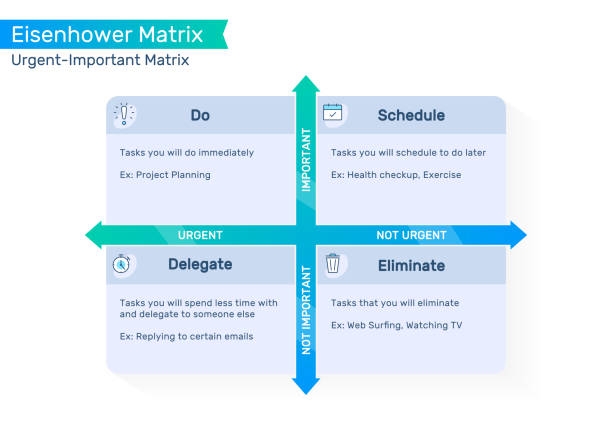The Eisenhower Matrix, often hailed as a brilliant tool for time management and task prioritization, provides a strategic framework for navigating the complex landscape of urgent and important tasks. Named after the 34th President of the United States, Dwight D. Eisenhower, this matrix offers a systematic approach to sorting tasks based on their urgency and importance, allowing individuals to make informed decisions about where to focus their time and energy. At its core, the matrix divides tasks into four quadrants: Urgent and Important, Important but Not Urgent, Urgent but Not Important and Neither Urgent nor Important. The brilliance of the Eisenhower Matrix lies in its ability to guide individuals towards a more thoughtful and deliberate allocation of resources. In the Urgent and Important quadrant, tasks demand immediate attention, such as crises or deadlines. This quadrant requires swift and decisive action, emphasizing the critical nature of the tasks within.
The quadrant labeled important but Not Urgent is where strategic thinking and planning come into play. These tasks, while not pressing, contribute significantly to long-term goals and success. The brilliance here lies in the foresight to recognize the importance of activities that may not scream for attention but are pivotal for sustainable progress. Conversely, the Urgent but Not Important quadrant highlights tasks that, while time-sensitive, may not contribute significantly to overarching objectives. The brilliance in handling this quadrant is the ability to delegate or find efficient ways to address these eisenhower priority matrix matters without allowing them to overshadow more critical priorities.

The final quadrant, Neither Urgent nor Important, serves as a reminder to eliminate or minimize tasks are that neither contribute to immediate goals nor hold long-term significance. The brilliance in this quadrant is in recognizing the value of saying ‘no’ to activities that do not align with personal or organizational objectives. Crafting urgent task solutions with precision involves a nuanced understanding of the matrix and a commitment to disciplined decision-making. By regularly revisiting and reassessing tasks within each quadrant, individuals can refine their focus, optimize their productivity and achieve a harmonious balance between short-term demands and long-term aspirations. The brilliance of the Eisenhower Matrix lies not just in its simplicity, but in its power to transform chaos into clarity, allowing individuals to navigate the complexities of their responsibilities with strategic acumen and precision.